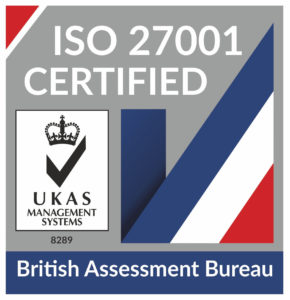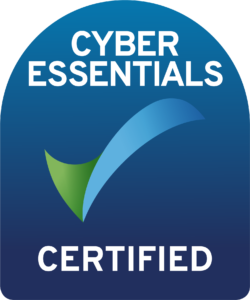
HaloITSM Guides
Documentation to assist with the setup and configuration of the HaloITSM platform
Email Configuration (High Level)
In this guide we will cover:
- How to change the Email start tag
- Message Groups
- Mailbox Overrides
- Email Signatures
Associated administrator guide:
Email Start Tag
When you begin using Halo, you will notice that within Configuration > Email (or Configuration > Email > General Settings if on v2.190.1+), there is an option to edit the start tag of emails, this refers to the tag given to the ticket ID. By default the tag will be [ID:{YOURTICKETSID}]
Fig 1. Edit email start tag
This can be changed to be something more unique to your system i.e. [MSP:{YOURTICKETSID}], this will mean that when tickets come into your system the tag is different. The tag is automatically prepended onto email subjects:
Fig 2. Custom tag
If you are making a change from [ID: ] to [{NEWTAG}: ], you will want to enable the following setting within Configuration > Email (or Configuration > Email > General Settings if on v2.190.1+), this will mean that any current tickets in the system where the customer has the ID tag in the email chain, will still be caught by the system as it will check to see if there are subjects that lead with the format [ID: {TICKET ID}]:
Fig 3. Use '[ID ]' as an additional subject tag check for Ticket matching setting
After making the change to the email start tag, it is not recommended to change it ever again, as this can cause complications for the email processing and matching in Halo.
Message Groups
Email Templates can be grouped into Message groups. New Message Groups can be created via heading to Configuration>Email>Message Groups and clicking 'New'. Once you have created a new message group. New email templates will be automatically created and assigned to this group. This then allows you to tweak your email templates per group and apply to the relevant mailbox or team to make use of.
Fig 6. Message Groups, used for collecting distinct email templates
After creating a new email template you can configure the standard templates specifically for the new message group
Fig 7. Creating a new message group
Now when I go to email templates, I can decide what message group I am altering.
Fig 8. Changing the email templates depending on message group
The precedence of message groups is as follows (in which the client message group overrides all others):
- Client
- Team
- Department
- Mailbox
- Organisation
So the system will check if there is a message group at client level, if not there then it will check if it is set at team level, and so on down the above list. So i.e. if it is set at team level, then the system will have already checked to make sure it is not set at client level, as if it was set at client level, that message group would be used instead.
Mailbox Overrides
By default the outgoing mailbox will use the outgoing options set on the mailbox, smtp can be used, but there is no need to if you are using the Azure mailbox. Alternatively you can change the outgoing email default global setting(changes it for all clients) in Configuration > Email.
Fig 9. Outgoing email defaults
Changing the outgoing default here will change this for all clients, however, an override can be set on multiple levels.
The hierarchy is as follows (in which action mailbox will override all others):
- Action
- Customer
- Top Level
- Ticket type
- Team
- Department
- Global
Action override is set against the action under the defaults tab. Ticket type override is set against the ticket type under the defaults tab. Team override is set against the team setup page under the details tab.
To override the outgoing mailbox used users under a customers under a particular Top level, head to customers module > Top level > select a top level. Here, under the details tab you can use the 'Mailbox override' field to choose which mailbox is used.
Fig 10. Top level mailbox override
To override the outgoing mailbox used for users under a particular customer, head to customers module > customers > select a customer > settings tab > email defaults section. Here, you can use the 'Mailbox override' field to choose which mailbox is used.
Fig 11. Customer mailbox override
To override the outgoing mailbox used for a particular department head to configuration > organisations > select an organisation > departments tab > edit a department, see 'Mailbox Override' field.
Fig 12. Department mailbox override
Note: Deleting a mailbox record will also clear mailbox overrides for Clients and Departments where the mailbox is in use. These will then fall back to the default mailbox set at the email level within the "Outgoing Email Defaults" button.
Email Signatures
There are configuration options at client, mailbox and agent level for setting signatures.
Fig 13. Email Signature Override at Client Level
Fig 14. Email Signature at Agent Level(Can be accessed from the agent icon on the top right of the screen, in the "My account" link
In order to apply the signature to an email template is to use the $-SIGNATURE variable in order for the signature to populate on emails. Signature Hierarchy is configured in the code so that the client level signature will be checked first, if that isn't populated then the mailbox signature will be checked, if not that then the agent, and finally if there is nothing, then the variable will not populate on the email.
The hierarchy for signatures is as follows (in which client signatures overrides all else):
- Client level
- Mailbox Agent Signature(A table configured via the incoming tab of a mailbox)
- Agent signature(Set on the preferences tab of an agent)
- Nothing
Popular Guides
- Asset Import - CSV/XLS/Spreadsheet Method
- Call Management in Halo
- Creating a New Application for API Connections
- Creating Agents and Editing Agent Details
- Departments and Teams
- Halo Integrator
- Importing Data
- Multiple New Portals with different branding for one customer [Hosted]
- NHServer Deprecation User Guide
- Organisation Basics
- Organising Teams of Agents
- Step-by-Step Configuration Walk Through



